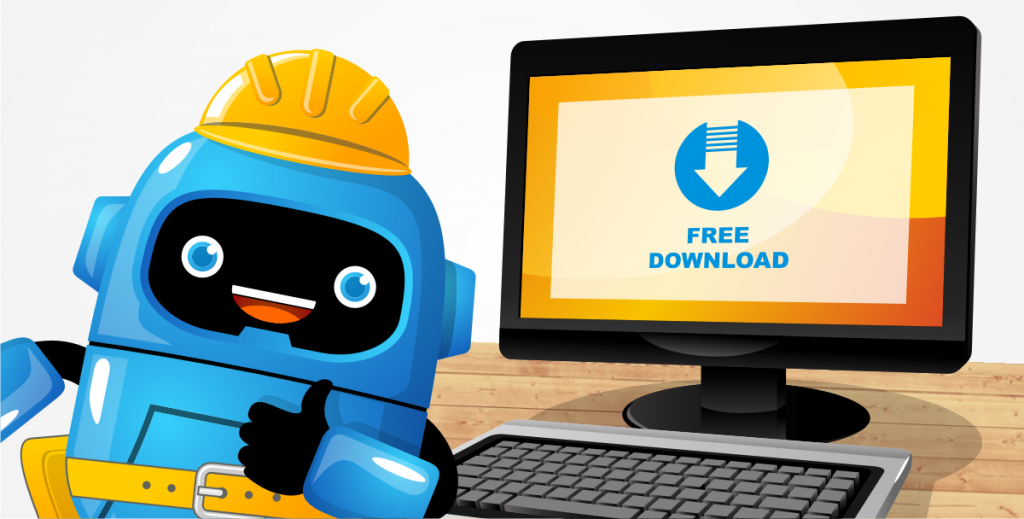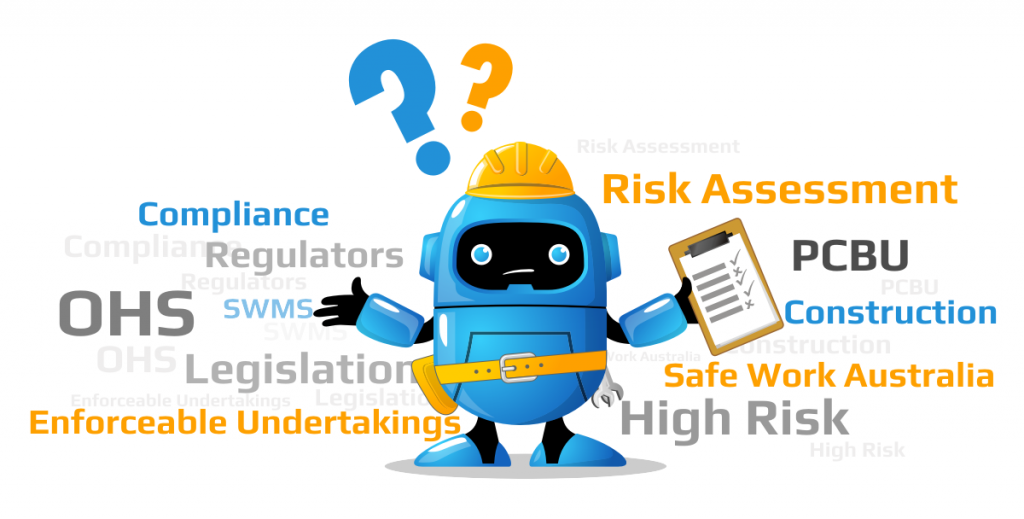How a Simple Process Drives Safety Compliance
Safety management systems have come a long way in the last 250 years. Just think back to workplace conditions during the Industrial Revolution – almost no pay, child labour, very long hours, and extremely dangerous work conditions with exposure to chemicals, accident-prone machinery, and no WHS requirements whatsoever.
But this has changed over the years. Legal reforms and acts were introduced – the Factory Act, the Employer’s Liability Act, and finally, the 1974 Health and Safety at Work Act. This legal document became the foundation for workplace health and safety processes in the UK and the rest of the world. And it led to the increasingly more complex safety processes we have today.
The core purpose of WHS is to keep people safe. Simple. With the increasing complexity of requirements and standards, Business owners, project managers and safety officers alike have to be careful of falling into the trap of using compliance to document requirements like the SWMS as their main measure of WHS compliance. This article looks at why adhering to document requirements is a poor standalone indicator of compliance. We also suggest how a simple safety process drives the success of your WHS compliance.
Documents are Symbols of a Process
Safety isn’t symbolic. It is real and should be treated in the real world, not on a document. Safety management systems do involve documents, but they symbolise a process. For example, a SWMS is a safety planning tool that identifies the risks of high risk construction work and the actions taken to manage those risks. It symbolises the process you are going to take when dealing with the risks and making sure your workplace and its workers are safe from those risks. When it’s under the (judges) hammer, the process symbolised (documented) matters most – not the symbol or the document itself.
Downloading a generic template for your SWMS, JSA, or any other safety document is like taking the symbol without taking the process it represents. And that defeats the whole point of your safety management system and its documents. To comply with WHS requirements, you should be focusing on the processes required to keep your workplace and its workers safe – not just on the documents themselves.
WHS audits look at whether you have followed an effective process that actively reduces the risks in your workplace. They care about if you have actually provided a safe work environment. Not simply whether you have ticked the box of completing a piece of paperwork.
In 2013, The Supreme Court Qld in a case against a QLD construction company for the death of two workers cited:
“work practices focused too much on the work performed onsite and did not pay adequate attention to the dangers presented by the conditions of the site itself”
In other words, not considering risks on the ground, in the real world can have significant impacts when taken to the extremes. Focussing too hard on the details of the tasks to be completed can lead to ignoring all the risks that are actively present
What you focus on matters. And if you want to pass your WHS audit and actually keep your workers safe, then it’s time to focus on the safety management process behind the symbols and documents.
But I still go through a process when filling in a template?
Safety management systems aren’t just about the symbols. They’re about the processes behind them. But you may be wondering – isn’t downloading a generic template still technically a process? Sure. But think about this. What process is more effective at satisfying the Work Health and Safety Act requirement to provide a safe work environment? Is it:
- Find a generic SWMS template on Google, Officeworks or other source
- Complete the boxes provided by the template as best as you can
- Gather up or seek out workers individually and gather signatures
- Store it onsite until the work is done
- Transferring the document to a folder in your office when you are done with the site
Or:
- Identify a the risks onsite, in person
- Build a new SWMS or modify the existing version to cover all task & site-specific risks that are present. Pushed to everyone to sign.
- Monitor how measures are being implemented while work is being completed with real time automated risk rating notifications
- Review by anyone relevant once the work has been completed
- Automatic document storage once complete for any future audits, follow-ups, or learning
From a legal standpoint, the second option is better,
The very purpose of developing a SWMS is to ensure that employers and workers have taken the time to identify the high-risk tasks to be done on site. And then, it is to develop measures to manage these risks and tasks in the context of the work being done. The very nature of a SWMS is that it is specific. It is created specifically in response to a specific site, specific tasks, and specific risks. A generic templated SWMS will not meet the intention behind WHS requirements. Instead, it will defeat the real power of the SWMS and even take away from your safety management.
As WorkSafe Victoria explains, “our concern is not what is written but what actually happens”. A generic SWMS is a symbol of safety that only provides guidance. To focus on the process and comply with WHS requirements, your SWMS and other safety documents need to be customised. It is the second process that is more likely to pass a WHS audit because it demonstrates an active approach to creating a safe work environment. And it is the first process that will get a much more severe punishment when a safety incident does happen, even though both processes are represented by the same type of document.
How to Prioritize the Process
The simplest way to boost the effectiveness of your safety process is to use a digital safety platform like SafeWorkPro. While you can do your safety management physically or digitally, doing it digitally is what will make the difference. Why?
Safety management software simplifies your safety management. Turning a complex process into a simple, easy to understand workflow that allows for an easier way to assess, mitigate, monitor and review workplace risks of all nature. It makes sure that your safety management system is customised, comprehensive, and lets you focus on the process. Leave the document creation, distribution and storage to the software. With safety management software, you can seamlessly customise, prioritise, and ensure your safety management system and its processes exceed WHS regulations.
SafeWorkPro is the Australian safety management software that can make sure your workplace prioritises the process over the symbols.
- Customise your SWMS, JSA, or other safety documents specifically to your worksite using our flexible document builder
- Make sure your specific workplace risks are managed and your workers are safe
- Ensure your company truly complies with WHS requirements
Do all of this seamlessly and in one place with the SafeWorkPro platform. Click the button below to find out more.
More From The SafeWorkPro Blog
Safety Templates Free
Everybody knows how difficult it can be to use safe work method statements (SWMS’s). Seriously, they are a nightmare for many reasons. Firstly, if you don’t have a method statement for a specific construction work procedure, trying to develop one from scratch is time and resource intensive. Most manages from construction businesses will search online for safety templates free to download. The good news is that we have work method statement template free for you over here.
Wait! Before you take off we want to run something past you. We are trying to create a free SWMS document repository for all to share. So far we have had several businesses give us their method statements free. We then transfer them over to the new template format from Safe Work Australia, rewrite them to remove all traces of your company, and make then available for everyone to use. Imagine a world where everyone made their SWMS’s available! Instead of a huge number of construction companies throwing safety into the too hard basket, we could lower the barriers of adoption and make a safer environment for all. So, if you are inspired and would like to share your SWMS’s we would really appreciate it.

Software Risk Assessment: what is it?
What is risk assessment software?
Simply put, risk assessment software, such as the one offered by SafeWorkPro, is a more time efficient and cost effective way to comply with workplace health and safety laws. Think of it as a form of safety management software that aims to streamline the risk assessment process by replacing the traditional paper-based method with a digital alternative. Instead of writing your risk assessment on paper, you do it on your smartphone or tablet device. This saves time and money but also maintains the highest standard of workplace safety.

Knowing how to write a risk assessment quickly is half the battle when it comes to improving productivity, but to achieve this in a way that will not undermine your safe operating procedures is difficult. This is where construction safety software becomes useful in that it takes the risk assessment methods you are already familiar with and converts them into an efficient risk assessment program.
But not all risk assessment software is created equal. Some just provide a digital copy of safe work method statements that are neither easy to use nor more compliant. Implementing new risk assessment tools into your workflow is disruptive enough without the added pain of insufficient safety management software. So it’s worthwhile taking the time to research your options – something we are completely familiar with at SafeWorkPro. Our risk assessment software was developed in conjunction with contractors to ensure the software meets the real needs of construction workers in a quick, safe and compliant way. It can be installed on any smart phone or tablet device making it transportable, practical and easy to use.
You can read more out our software solutions right here.
Download a Free Method Statement Template
Personal safety at work revolves around conducting consistent and compliant OHS procedures. This involves tools like proper signage, a clear safety procedure, training but for businesses, especially the small operators, this can be a drain on resources. Add on the cost of paperwork like a safe work method statement (SWMS), and then compliant OHS procedures become a serious consideration businesses need to make.
Obviously skipping any of these processes will not only put workers at risk but also invite harsh penalties from regulators. Here at SafeWorkPro, we believe that by maximising efficiency with health and safety documents, we can drastically improve the cost of conducting high risk construction work to highest safety standard possible.
The first step to this is getting a free SWMS template, something that is surprising difficult to find. SWMS are mandatory under Australian workplace health and safety laws so using them properly not only makes OHS sense but also means you can display compliance with these laws and regulations.
So for your convenience and in the hope that it will boost your workplace safety record, SafeWorkPro is offering you access to a free safe work method statement template. This is a safe work method statement sample based on the examples offered by Safe Work Australia. Although it is just a template, the free download will provide a basis for future SWMS across a diverse range of construction jobs.
If you would like more information on SWMS, risk assessment of OHS policy, refer to the SafeWorkPro Blog.



